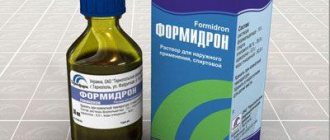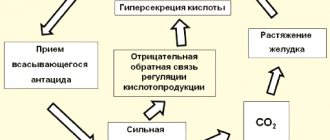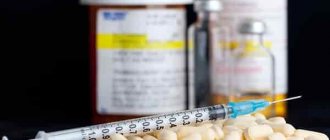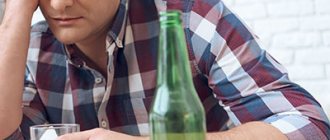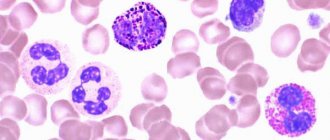Greetings, my dear readers!
Sodium bicarbonate (E500) or baking soda is a true all-rounder (yeast and acidity regulator). Whether baking, teeth whitening or hair washing, sodium bicarbonate works wonders for it all. Today we will talk about how to use it. Why you should drink baking soda and how it can improve your health.
Sodium bicarbonate, also known as sodium bicarbonate, bicarbonate, bicarbonate of soda or Vichy salt, is a white crystalline solid compound that is obtained from a natural mineral called natron, which contains large amounts of baking soda. Or by the synthesis of sodium chloride (table salt), ammonia and calcium carbonate (E170i).
It is a water-soluble compound that, in the presence of acid, decomposes to produce carbon dioxide (CO2) and water. This gives it the property of neutralizing acids.
Release form
Powder for preparing a solution for infusion therapy. In bags of 50 g.
Powder for the preparation of a solution for topical use and oral administration. In bags of 10, 25 and 50 g.
Solution for infusion 4%. Available in 2 and 5 ml in disposable containers made of polymer materials; 100, 200 and 400 ml bottles; 100 and 250 ml in polymer containers.
Tablets 0.3 and 0.5 g.
Suppositories for rectal use 0.3, 0.5 and 0.7 g, 10 suppositories per package.
Pharmacodynamics and pharmacokinetics
Helps restore the disturbed balance of water and electrolytes, as well as acid-base balance.
During the dissociation (in chemistry and biochemistry - the reversible decomposition of complex substances into individual elements and/or constituent components) of sodium bicarbonate, the bicarbonate anion is released. It binds hydrogen ions, resulting in the formation of a carboxylic acid, which subsequently breaks down into water and carbon dioxide (released during respiration).
This causes an alkaline shift and an increase in the buffer capacity of the blood.
Sodium bicarbonate increases osmotic diuresis and excretion of Na and Cl ions from the body, reduces the acidity of urine, and prevents the sedimentation of uric acid in the urinary system.
Bicarbonate anion does not penetrate into the intracellular space.
The pharmacokinetic profile of the drug has not been studied.
Indications for use: what does baking soda treat?
Use in medicine is indicated for diseases that are accompanied by an increase in the acidity of digestive juice in the stomach, peptic ulcer , metabolic acidosis (including acidosis that develops in the postoperative period or against the background of diabetes mellitus , infectious disease , intoxication ).
Treatment with the drug is used for inflammatory ophthalmological diseases , as well as for inflammatory diseases of the mucous membranes of the upper respiratory tract and oral cavity .
The medicinal properties of baking soda are used in cases where there is a need to loosen earwax and dilute the secretions of the bronchial glands , to alkalize urine and reduce discomfort in mild infections of the urinary system , and in tubular (tubular) renal acidosis .
Sodium bicarbonate is also used in therapy aimed at removing cystine and urate kidney stones .
Contraindications
Contraindications for treatment with baking soda:
- hypersensitivity;
- conditions that are accompanied by the development of alkalosis .
In addition, hypochloremia and hypocalcemia . In the first case, taking sodium bicarbonate can provoke a long-term decrease in absorption in the digestive canal and vomiting, which in turn leads to a significant loss of chlorine ions by the body, including severe alkalosis .
Taking soda during hypocalcemia may be accompanied by tetanic convulsions and an increased risk of alkalosis .
Rationing
Things are complicated with standardization of alkalinity. This group of parameters in water itself is not standardized. However, bicarbonates are standardized (only in bottled water), which partially determine the value of alkalinity. The carbonate content is not directly standardized, but given that the pH in drinking water is strictly standardized, free alkalinity in drinking water should be zero.
Maximum permissible concentration (MPC) of hydrocarbonates in various types of water
| Rationing | MPC, mg/l |
| Bottled water of the first category SanPiN 2.1.4.1116-02 | 0–400 |
| Bottled water of the highest category SanPiN 2.1.4.1116-02 | 30–400 |
| Water from centralized water supply systems SanPiN 2.1.4.1074-01 | — |
| Water bodies of fishery importance Order of the Ministry of Agriculture of the Russian Federation No. 552 | — |
| Recreational water use objects SanPiN 2.1.5.980-00 | — |
| Swimming pool water SanPiN 2.1.2.1188-03 | — |
| Wastewater in domestic wastewater systems Decree of the Government of the Russian Federation No. 644 | — |
| Wastewater in storm drainage systems Decree of the Government of the Russian Federation No. 644 | — |
Side effects
Long-term use of sodium bicarbonate leads to alkalosis (increased blood pH), the clinical manifestations of which are:
- nausea;
- vomit;
- deterioration of appetite (to the point of complete loss);
- stomach ache;
- tetanic convulsions (in especially severe cases);
- increase in blood pressure.
When using suppositories, a laxative effect may develop, the urge to defecate, rumbling, diarrhea and flatulence .
Side effects
Sodium bicarbonate may cause unlikely side effects such as flatulence and vomiting. It can also cause a rebound effect and increase acidity rather than decrease it.
When used chronically in large quantities, it can cause systemic alkalosis, the opposite of excess acid, difficulty breathing, as well as muscle weakness and restlessness.
Its use is not recommended for:
- less than 12 years of age;
- those with hypertension, kidney, liver or heart problems, or those taking diuretics or a low-sodium diet should notify their doctor for monitoring;
- not recommended for use during pregnancy or breastfeeding;
- It should not be taken by people with an allergy to sodium bicarbonate (bicarbonate), metabolic or respiratory alkalosis, hypocalcemia, hypochlorhydria or prone to edema, appendicitis or intestinal obstruction.
Sodium bicarbonate has an antiseptic effect
Be it bacteria, parasites, mold or fungi: sodium bicarbonate kills them all!
And not only in our body. If you want to disinfect your toothbrush, you can put it in a glass of water with sodium bicarbonate for a few hours. And anyone who has a sore throat or cough can gargle with this solution and disinfect the throat.
Sodium bicarbonate regulates your body's pH
If the stomach produces too little acid, digestion stops. If you drink a glass of water with half a teaspoon of sodium bicarbonate every now and then, you can use it to regulate your pH and stimulate digestion. This helps with constipation.
Bicarbonate solution prevents the formation of kidney stones and helps with heartburn
If the urine is too acidic, kidney stones form. Sodium bicarbonate solution helps those who are prone to hyperacidity. It fights heartburn and prevents the formation of kidney stones by regulating acid balance. This can really help with pregnancy heartburn.
But it is not recommended to use it without a doctor's recommendation.
Sodium bicarbonate helps with urinary tract infections
For example, anyone suffering from cystitis can also use this home remedy. Thanks to its disinfectant effect, it accelerates healing and fights infection.
Those who also drink plenty of water counteract urinary tract infections without any medication.
By the way: flu symptoms such as fever can also be alleviated with the help of such a drink.
Help with muscle pain
Any physically active person knows about muscle pain. This occurs when muscles become too acidic - which can certainly happen during intense athletic exercise. What also helps here is a magical drink made from water and sodium bicarbonate, which restores the pH level of our muscles.
Caution: Consume only in moderation! Anyone who has high blood pressure or is pregnant or breastfeeding should consult a doctor first. Not recommended for children under six years of age!
Sodium bicarbonate: instructions for use
Instructions for use of sodium bicarbonate powder
Sodium bicarbonate powder is used to prepare aqueous solutions for washing, rinsing and inhalation use.
For stomatitis , rhinitis , laryngitis and a number of other diseases of the mouth, nose and throat, prepare a solution with a concentration of 0.5-2%.
To wash the skin and mucous membranes of the upper respiratory tract when they are damaged by acids, poisonous (phosphorus and organochlorine) and irritating substances, a two percent solution should be used.
Instructions for solution for intravenous administration
The solution for infusion should be used under control of the alkaline state of the blood. For adults it is administered by drip, into a vein or rectally, for children - intravenously.
The product can be used pure or diluted. For dilution, use a five percent glucose solution (in a 1:1 ratio).
The rate of administration is 60 drops/min, the daily dose is up to 200 ml. The frequency of infusions depends on the acid-base balance readings.
Newborn children are administered into a vein at a dose of 4-5 ml/kg, children of other age groups - at a dose of 5-7 ml/kg.
The need for repeated administration is determined by indicators of acid-base balance (acid-base balance).
How to take sodium bicarbonate tablets?
The tablets are taken orally several times during the day. A single dose for an adult varies from 0.5 to 1 g, for a child - from 0.1 to 0.75 g (depending on age and indications).
Treatment according to Neumyvakin: how to treat with soda so as not to harm?
Following the recommendations of Professor Neumyvakin, sodium bicarbonate (sodium bicarbonate is the same as soda) should be taken on an empty stomach about 20-30 minutes before breakfast and dinner. If possible, you can introduce another dose during the daytime.
The main principle of treatment is that taking soda cannot be combined with the digestion process. This is due to the fact that when food enters the stomach, an acidic environment is formed in it. The environment of an empty stomach is neutral.
Begin treatment with half a coffee spoon of the product per day. For dilution, use 200 ml of hot milk or a similar volume of hot water. You should not boil water/milk, as this will result in a completely different formula. You can also take soda without stirring it in liquid, but simply drink it with it.
Treatment is carried out in three-day courses, between which intervals of the same duration are maintained. If the body reacts normally to taking soda, the single dose can be increased to 7-10 grams (corresponding to the volume of 1 teaspoon).
After three days of regular use of the drug, you should again take a three-day break.
Gradually, monitoring the person’s health status and not forgetting the need to take breaks in treatment, the dose is increased to 7-30 grams.
The beneficial properties of sodium bicarbonate are due to the ability of this product to neutralize acid, maintain an optimal balance of acids and alkalis in the body, and also increase the body’s alkaline reserve.
Using soda, acid deposits in the digestive canal, kidneys and liver are removed, and blood vessels are cleaned. A soda enema given after taking Piperazine increases the effectiveness of the latter when infected with pinworms and roundworms .
In addition to oral administration, rinsing the mouth and throat with a solution of baking soda and hot baths with the addition of sea salt and soda are also very beneficial for human health. The water should be heated to a temperature of 39-42˚C, salt and soda are taken, respectively, at the rate of 100 and 200-250 g per 100 liters of water.
This procedure allows you to improve your skin and musculoskeletal system. Biochemical and energy processes begin to restore in cells, hemodynamics increase, and oxygen absorption by tissues improves. As a result, well-being is normalized, mental performance and physical endurance increase.
Sodium bicarbonate is taken to treat diabetes , cancer , drug addiction, alcoholism and substance abuse.
In addition, soda dissolves deposits harmful to the spine and joints, alleviates the patient’s condition with gout , osteochondrosis , rheumatism , polyarthritis , cholelithiasis and urolithiasis .
Treating Cancer with Baking Soda: Sodium Bacarbonate Against Cancer
Tullio Simoncini (a doctor from Italy) believes that cancer is nothing more than a greatly overgrown colony of fungi of the genus Candida, and the traditional interpretation of the nature of the disease is fundamentally incorrect.
What in official medicine is considered to be uncontrolled cell division, in his opinion, is a process that the body launches on its own to fight thrush .
Following this theory, it can be assumed that the fungus, which is usually well controlled by the immune system of a healthy person, begins to actively multiply in a weakened body, forming a large colony.
When an organ is infected with thrush , the immune system reacts to it by building a protective barrier from the body's cells. Metastasis can be explained by further growth of the colony and migration of the fungus in the body.
Only cells of a normally functioning immune system can destroy the fungus. Thus, the key to recovery is a strong immune system.
The reason for decreased immunity and, consequently, the occurrence of many serious diseases is a decrease in pH. If we talk about cancer , then the optimal environment for their development is an acidic environment, that is, an environment in which the pH value does not exceed 5.41.
In a newborn child, for comparison, it is 7.41, and in a healthy adult it should range from 7.3 to 7.4.
The recommendations in the Physician's Handbook, dated 1973, indicate that patients with a pH of 7.25 or lower should be prescribed alkalizing therapy, or, in other words, they are recommended to take from 5 to 40 grams of soda per day.
Soda restores intracellular metabolism , prevents the loss of potassium and enhances the absorption of oxygen.
Sodium bicarbonate for the treatment of cancer is taken on an empty stomach, half an hour before meals, starting with a volume equal to a fifth of a teaspoon, and gradually increasing the dose by 2-3 times.
A single dose is diluted in 200 ml of hot milk (very warm water) or washed down with the same amount of water/milk. You need to take the “medicine” 2 or 3 times a day.
Medical use
Sodium bicarbonate E500 is used as an antacid, that is, as an element that reduces excess acidity. Thus, it works by neutralizing excess acid that accumulates in the stomach.
First of all, it indicates the symptomatic treatment of increased stomach acidity, such as heartburn, belching or acid indigestion. As soon as the symptoms exceed seven days, you simply need to go to the doctor.
For proper use, you need to dissolve one teaspoon of baking soda in half a glass of water and wait until the fizz disappears to drink.
Precautions before use:
- Should not be taken for more than a week. Its long-term use can cause systemic alkalosis.
- Do not eat with milk or other dairy products.
- You should wait an hour after eating before consuming as this may cause an increase in carbon dioxide production, leading to bloating.
- Should not be taken more than twice a day.
If you are taking any other medicines, you should not take sodium bicarbonate (bicarbonate) by mouth without first checking with your doctor or pharmacist.
It interacts with various medications such as:
- antifungals (ketoconazole, etc.);
- various types of antibiotics;
- medications for anemia due to their iron content, such as NSAIDs (non-steroidal anti-inflammatory drugs);
- with some antiarrhythmic, antiepileptic drugs and treatment of Parkinson's disease.
It also interacts with cardiac antiarrhythmics, lithium salts, and calcium supplements, among others. Some of these interactions are resolved by simply spacing out the bicarbonate (sodium bicarbonate) and the medicine by two hours, as this simply affects the way the medicine is absorbed. But in other cases it can enhance or reduce its effectiveness. This is what experts advise.
You should also be aware that sodium bicarbonate (bicarbonate) may dissolve the enteric coating of gastro-resistant tablets, so you should wait two hours between taking the sodium bicarbonate (bicarbonate) and taking the tablets.
In addition, its consumption may change the results of some analytical tests, so you should tell your doctor that you have taken sodium bicarbonate (bicarbonate) before having a blood test.
Overdose
hyperalkalosis and tetanic convulsions may develop . hyperalkalosis develops, the drug should be discontinued. If there is a risk of developing tetany of calcium salt of gluconic acid ( calcium gluconate injected into a vein .
Interaction
Under the influence of sodium bicarbonate, urine pH increases, which leads to:
- decreased amphetamine ;
- reducing toxicity and increasing excretion of methotrexate ;
- delaying the elimination of ephedrine and increasing the risk of developing side effects associated with its use - sleep disturbances, increased anxiety, tremor , tachycardia .
When using a maintenance dose of lithium carbonate, sodium bicarbonate helps to reduce the plasma concentration of lithium, which is due to the influence of Na ions.
The drug helps reduce the absorption of tetracyclines when taken orally.
A solution for infusion when administered drip into a vein can enhance the antihypertensive effect of reserpine .
The solution reacts with acids ( ascorbic, nicotinic, etc.), alkaloids (caffeine, atropine , theobromine , apomorphine , papaverine ), salts of calcium, heavy metals (copper, zinc, iron), magnesium, cardiac glycosides , which is accompanied by precipitation or hydrolysis (decomposition) of organic compounds. Therefore, these substances should not be dissolved in sodium bicarbonate solution.
Also, do not mix sodium bicarbonate with solutions that contain phosphorus.
special instructions
What is sodium bicarbonate? All about baking soda
Everyone knows what soda is. It is a fine white crystalline powder with a specific salty-alkaline taste. According to Wikipedia, the substance is completely non-toxic to the human body, and is also explosion and fireproof.
The Pharmacopoeia states that the powder is stable in dry air, practically insoluble in 95% alcohol and highly soluble in water. Decomposes slowly when exposed to moisture.
If sodium bicarbonate is calcined, it loses weight. When the powder is calcined at a temperature of 280-300°C, its mass decreases by at least 36.6%.
The substance is known as sodium bicarbonate, baking (or drinking) soda, sodium bicarbonate (or bicarbonate). Baking soda is a pure substance and is an acid salt of sodium and carbonic acid (H2CO3).
Neutralizes acids (quite often there are instructions like “hydrochloric or nitric acid neutralized with soda”).
The chemical formula of baking soda (or, in other words, the formula of sodium bicarbonate) is NaHCO3. The rational formula of sodium bicarbonate is CHO3Na.
The name of the substance in Latin is Sodium bicarbonate (Sodium hydrogen carbonate).
Sodium bicarbonate is produced in accordance with GOST 2156 76. The standard is valid and applies to the product that is produced for the needs of the chemical, light, food, pharmaceutical and medical industries, retail trade and non-ferrous metallurgy.
Are soda ash and baking soda the same thing? Soda ash - what is it?
Sodium bicarbonate and soda ash are two different products that should not be confused. What is soda ash? This is a substance with the chemical formula Na2CO3. Its main difference from sodium bicarbonate is the degree of alkaline activity.
If sodium bicarbonate is a weak alkali with a pH value of 8.1, then soda ash exhibits strong basic properties (its pH value is 11).
In the All-Russian Classifier of Products, baking soda and soda ash are assigned different OKPD codes.
Soda ash is used for household needs: softening water, cleaning dishes, tiles, washing floors, clearing pipe blockages, preventing scale formation, etc.
Healing properties, benefits and harms of baking soda
The areas of application of sodium bicarbonate are quite diverse. It is used to prevent strokes, treat cancer and a number of other serious diseases, alcoholism, tobacco and any other types of addiction (including toxic and narcotic substances), to remove harmful substances and toxins from the body, and for hair care.
Many Russian doctors recommend using the healing capabilities of baking soda as a worthy alternative to traditional methods of treatment.
Soda destroys acidosis and provokes an alkaline shift, which is accompanied by alkalization of digestive juices, dissociation of water contained in the body into OH- and H+ ions due to amino acids, enzymes, amine alkalis, D- and RNA nucleotides and general improvement of the body.
In a healthy person, the bile and juices of the pancreas and Bruttner glands , and the duodenal should be alkaline: digestion can only proceed normally in an alkaline environment. In addition, an alkaline environment is destructive for parasites - roundworms , worms from the genus Opisthorchis , pinworms , tapeworms , etc.
of thiamine , choline , vitamin PP , pyridoxine , and cobamide increases significantly .
With increased acidity, saliva also becomes acidic, which is why a person’s tooth enamel gradually begins to deteriorate. Therefore, for the treatment of caries and alkalization of saliva, the use of fluoride-containing pastes is supplemented with the administration of soda.
A.T. Ogulov, for example, strongly recommends using this product in the treatment of dental and oral diseases for gum massage, rinsing and oral administration.
A teaspoon of baking soda diluted in a glass of water is a well-known remedy for heartburn. Sodium bicarbonate is also used for the face: adding a pinch of soda every day to the foam or gel for washing, you can thoroughly cleanse the skin of blackheads and a layer of keratinized surface cells, relieve inflammation and get rid of acne.
A mask made from oatmeal (1 cup) and baking soda (1 teaspoon) ground into powder helps very well with rashes. Mix the ingredients well and pour into a glass jar. To prepare the mask, pour a tablespoon of the mixture with water to make a paste. The mass is applied to the face for 15-25 minutes.
The big advantage of the product is that it has no contraindications and is suitable for all skin types.
Soda is used for insect bites, sunburn, cystitis , bad breath and feet, diaper rash, migraines and colds.
Large doses of soda are not absorbed with water and cause diarrhea, which makes it possible to use sodium bicarbonate as a mild laxative.
Knowing everything about what baking soda is and how healthy it is, you should determine whether you can always drink it. So, when can sodium bicarbonate, instead of being beneficial, harm the body?
The drug is dangerous in case of any concomitant diseases of the kidneys and heart, individual intolerance, as well as if it comes into contact with the mucous membrane of the eyes.
When taken systematically, carbon dioxide begins to be released in the stomach, which has a stimulating effect on the receptors of the gastric mucosa, stimulates the release of gastrin and can cause a secondary increase in secretion. Regular use also increases the risk of phosphate stone formation.
The removal of carbon dioxide can cause perforation of the walls of the digestive canal.
What are the benefits of drinking soda in everyday life?
In everyday life, sodium bicarbonate is used in baking bakery and confectionery products, to retain unpleasant odors in the cat's litter box, to clean the trash can from dirt and odors, to wash tiles, wallpaper and bathroom fixtures, to wash hands after working with strong-smelling products (onions, garlic, etc.). d.), speeding up the cooking of legumes, as a remedy for ants.
How to clean your heels with baking soda? What are soda foot baths made from?
Baking soda is often used to soften heels and eliminate unpleasant foot odor. To prepare a bath, add a tablespoon of sodium bicarbonate and a couple of drops of any essential oil to a liter of warm water. Keep your feet in water for 15 minutes (it’s better to take a bath at night).
After the skin has softened, it should be carefully treated with pumice. Then the feet are rinsed with water and lubricated with a rich cream, and socks are put on top.
You can use warm milk instead of water.
To prepare a foot scrub, you can mix 1 teaspoon of vegetable oil (for example, olive) with a tablespoon of soda, or you can simply dilute the soda with water to a paste. The mixture is applied to the skin and massaged well to remove rough skin.
Helena Roerich about baking soda
Roerich E.I. (Russian religious philosopher, public figure and writer) considered the healing properties of baking soda to be so strong that regular use of this simple and affordable remedy twice a day can prevent many diseases, including cancer.
When under severe stress, Elena Ivanovna herself took up to 8 coffee spoons of baking soda per day, pouring them onto her tongue and washing it down with water. She advised children to dilute soda in hot milk. This recipe in folk medicine is often used to treat colds that are accompanied by a severe cough.
Hot milk and soda, brought almost to a boil, relieves not only pain and inflammation in the throat, but also body aches.
Drinking baking soda is the easiest and most natural method to solve the problem of constipation. In addition, the substance neutralizes toxic substances well.
In the works of E.I. Roerich also mentions the treatment of cancer with sodium bicarbonate. The author points out that soda is an important component of human blood. It is present in plasma and lymphoplasm , which contains lymphocytes . Presumably, soda is necessary for the energy supply of lymphocytes - cells that are responsible for the body's immune response.
Precautionary measures
of alkalosis appear, you should take a break from treatment. If the drug is used to correct acidosis , blood glucose levels should be kept under control.
Where is sodium bicarbonate used?
Primarily, sodium bicarbonate is used in the food industry as an acidity regulator, enhancing agent and carrier. Soda and soda are common kitchen helpers.
The first serves as a leavening agent and is part of the baking powder. It is ideal for this purpose as it releases CO2 even at relatively low temperatures (60°C). It also turns into sesquicarbonate, which, in turn, releases carbon dioxide along with a weak acid. The resulting gas increases the volume of the dough, it “rises” and becomes loose.
Soda is widely used to regulate the acidity of drinking water. Because it also solubilizes (breaks down) insoluble food components, it is used in cocoa to increase color intensity or as a raising agent in coffee.
Sodium bicarbonate, together with disodium phosphate, prevents condensed milk from curdling. Sodium bicarbonate is allowed as a dispersant in processed cheese, cooked cheese or cooked sausages. This means that it maintains optimal mixing of at least two inherently immiscible components.
It can also be added to organic foods, at least plant-based foods. If it is intended to use products of animal origin, this is permitted only in exceptional cases - for example, with sour cream.
There is no maximum quantity limit for sodium carbonates. Moreover, they can be used in all food products. Good examples of using the E 500 include:
- baking powder (sometimes included in baking powder);
- butter;
- carbonated drinks;
- processed/boiled/sour cream cheese;
- boiled sausage;
- cocoa and cocoa products (eg chocolate);
- coffee substitutes/additives;
- effervescent powder;
- condensed milk;
- ready meals;
- pizza;
- baked goods (including muffins, gingerbread)
- various sweets;
Cleaning products may also contain sodium bicarbonate, sodium bicarbonate, bicarbonate, or bicarbonate of soda.
Analogs
Synonyms are the drugs Soda Buffer and Sodium bicarbonate . The 4th level ATC code is the same as Glucyl , Potassium chloride , Calcium , Xylate , Lactoxyl , Magnesium sulfate , Sodium chloride , Plerigo , Reamberin .
Lose weight with baking soda. The benefits and harms of baking soda
Baking soda for weight loss is used to change acidity in the body, normalize digestion and facilitate a number of other physiological processes, as well as reduce appetite.
The recipe for baking soda for weight loss is as follows: freshly squeezed juice of 3 lemons and 1 tbsp. spoon of sodium bicarbonate per liter of water.
The danger of using baking soda for weight loss is that systematically taking sodium bicarbonate solution can provoke the occurrence of a number of diseases of the digestive system (or aggravate existing diseases).
A safer recipe for losing weight is soda baths. Sodium bicarbonate in hot water (36-37°C) stimulates the opening of pores and the removal of toxins, due to which the body is freed from excess weight and reduces its volume.
To prepare a 150-200 liter bath, dilute 200 g of soda in a small volume of very hot water.
Even if such a procedure does not radically solve the problem of excess weight, its benefits for the body will be enormous, since it will cleanse the lymphatic system , reduce the appearance of cellulite (especially if you add essential oils to the water), improve the condition of the skin and strengthen the nervous system.
Alkalinity
Description: multi-level integral parameter reflecting the concentration of anions of weak organic and inorganic acids in water, mainly coal. Characterizes the direction of hydro- and geochemical processes, the corrosive aggressiveness of water towards concrete, steel, heating boilers, and steam generators.
Determination methods: titrimetry using indicators, potentiometric determination.
Types of alkalinity
| Type | Conditioning |
| Free alkalinity | Presence of carbonate ions CO2−3 and hydroxyl ions OH− in water in waters with pH > 8.3 |
| Carbonate alkalinity | The presence in water of carbonic acid dissociation products - carbonates CO2−3 and bicarbonates HCO−3, which are in equilibrium |
| Total alkalinity | The presence in water of anions of weak inorganic and organic acids, titrated with a strong acid |
Methods used at the MSU Test Center for determining the concentration of hydrocarbonates in natural environments
| Regulatory document for the methodology | Determination method | Equipment |
| Water | ||
| GOST 31957-2012 | titrimetry | auxiliary equipment |
| RD 52.24.493-2006 | titrimetry | auxiliary equipment |
| The soil | ||
| GOST 26424-85 | titrimetry | scales |
Occurrence: Hydrocarbonates HCO−3, carbonates CO2−3, hydroxide ion OH− and weak organic and inorganic acid ions appear naturally in natural water through the dissolution of carbon dioxide, minerals and host rocks in water when water comes into contact with soil. Therefore, almost all types of water are characterized by an alkalinity different from zero. Alkalinity is closely related to pH, so different alkalinities may not be present in water at the same time.
Reviews
Baking soda is a time-tested remedy “for beauty, cleanliness and health.” These are the reviews about Sodium bicarbonate that can be found on the Internet. It is used for facial cleansing, teeth whitening and caries treatment, for weight loss and hair care, and also for pregnancy detection.
By the way, reviews of baking soda for weight loss are very optimistic, but only in cases where it was considered not as a panacea, but as an adjuvant. Some girls note that after a soda bath they immediately lost up to 2 kg of weight, but without physical activity and nutritional adjustments, the procedures would not have given a visible result.
Alternative medicine uses Sodium Bicarbonate to treat cancer. It is quite difficult to find reviews about soda treatment for oncology describing the results of treatment by the person himself. What is known is that patients of the doctor who promotes this method of treatment also die.
There are no statistics on people cured of cancer using soda. Self-medication when it comes to cancer is fraught with loss of time and the chance of cure.
Other uses
In addition, experts note that sodium bicarbonate (bicarbonate) can also be used as an antiseptic to treat minor mouth ulcers and mild sore throats by irrigating or rinsing the mouth.
Another option is to use it as a culinary element, especially in baking. By interacting with the acids present in milk, it produces small bubbles that make cakes, cakes, muffins, pancakes and breads fluffier. Likewise, it can be used to reduce the acidity of some cooked foods. For example, in sauces.
Price of Sodium bicarbonate
You can buy sodium bicarbonate in the form of a 4% solution at a pharmacy for 15-28 UAH. In Russian pharmacies its price ranges from 103 to 160 rubles (depending on the volume of the bottle and the manufacturer).
How much does baking soda cost?
The price of baking soda per kg is on average 2.5 UAH (17-25 Russian rubles), for a pack of 500 g - 3.8 UAH (11-16 Russian rubles).
You can buy sodium bicarbonate in bulk for about 3.2-3.5 thousand UAH/t (about 10 thousand rubles/t).
- Online pharmacies in RussiaRussia
- Online pharmacies in UkraineUkraine
ZdravCity
- Sodium bicarbonate solution for inf.
40mg/ml vial. 200ml No. 28 JSC Dalkhimfarm 1880 rub. order
Pharmacy Dialogue
- Sodium bicarbonate (vial 40 mg/ml 200 ml) Dalkhimpharm
RUB 1,727 order
show more
Pharmacy24
- Sodium bicarbonate 4% 100 ml solution TOV "Yuriya-Pharm", Ukraine
27 UAH.order - Sodium bicarbonate 4% 200 ml solution TOV "Yuriya-Pharm", Ukraine
35 UAH order

